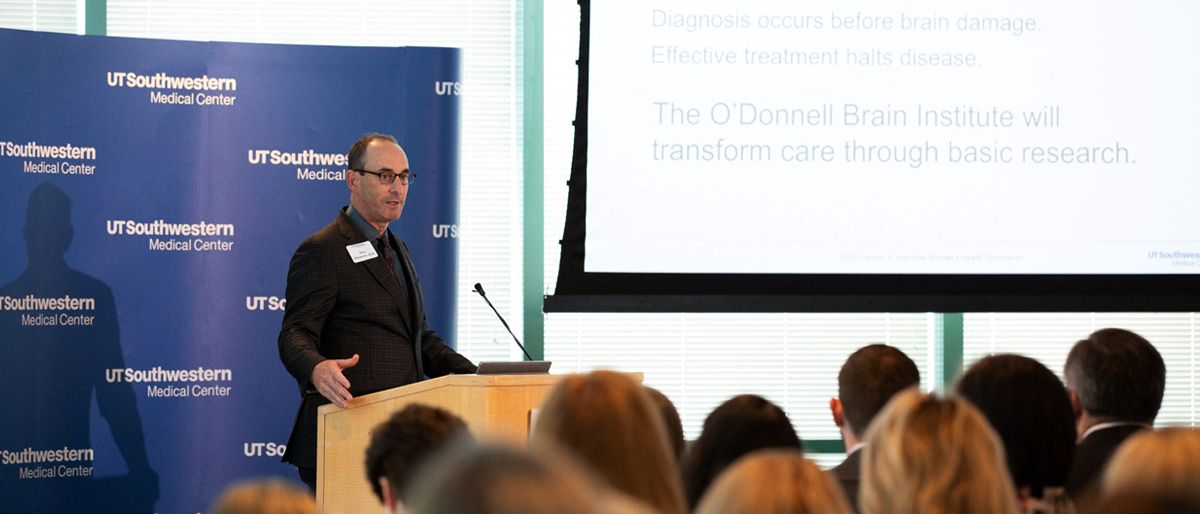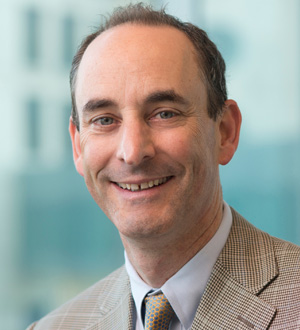Old foes in a new light: inquiries into Alzheimer's disease

For the more than 5 million Americans with Alzheimer’s, as well as for caregivers, this common form of dementia is devastating – a disease with no cure and eventual loss of mental function.

Today, treatments can only help lessen symptoms, said Dr. Marc Diamond, Director of the Center for Alzheimer’s and Neurodegenerative Diseases at UT Southwestern’s Peter O’Donnell Jr. Brain Institute. But despite the disease’s grim trajectory, the leader in Alzheimer’s research told those attending the Carolyn P. Horchow Women’s Health Symposium that he is optimistic.
Dr. Diamond’s vision for the future? We will no longer really see dementia in the clinic the way we do now. We will pick up the fundamental processes that lead to dementia long before a person actually experiences the symptoms.
And: We’re going to be giving an effective treatment to stop the disease.
Alzheimer’s is by far the most common cause of neurodegenerative dementia in older people, Dr. Diamond said, although dementia can also be caused by strokes, Parkinson’s disease, and even vitamin deficiencies, especially vitamin B12, a nutrient found only in animals. Depression or chronic sleep disturbance can look like dementia, he added.
In Alzheimer’s, an abnormal transformation of the protein tau has been linked as a causal factor. We know that when Alzheimer’s strikes, that the protein changes its shape and it starts behaving abnormally inside the brain cells,
he said.
When tau changes shape, Dr. Diamond explained, it exposes amino acids previously hidden inside that cause it to begin attaching to other tau molecules. Abnormally shaped tau then moves from one cell to another, he said, creating chains of abnormality as it goes, kind of like falling dominoes in the brain.
This process starts in an area of the brain tied to memory, leading to Alzheimer’s dreaded effect on the mind, said Dr. Diamond, also Professor of Neurology and Neurotherapeutics and Neuroscience.
Lab tests have borne out this theory. If bad forms of tau are introduced into the hippocampus brain region of a mouse, the result is like an infection of pathology that spreads through the brain.
Already, an immunotherapy/antibody he developed several years ago to attack bad tau is in phase two clinical trials. Many other pharmaceutical companies are working with this approach in hopes of developing treatments against tau and other proteins that form abnormal tau assemblies in the brain, Dr. Diamond said.
“We’ve got active programs going on in the Center for Alzheimer’s and Neurodegenerative Diseases to try to attack the formation of these abnormal assemblies in the first place,” he added. “What we’re doing is developing small molecules that will stabilize the protein in its healthy form and prevent it from converting.”
We’re also developing next-generation immunotherapies that are based on our knowledge of the unique structures that cause the different diseases (involved in dementia). So we’re actually trying to make personalized vaccines that would be given much like a flu shot to attack this problem,
Dr. Diamond said, adding that this strategy has already worked in mouse models.
Elsewhere, clinical trials are underway using antisense oligonucleotide inhibitors – a genetic approach – to turn off Alzheimer’s development in genes.
With the Centers for Disease Control and Prevention (CDC) projecting the number of people with Alzheimer’s to almost triple by 2050 as the U.S. population ages, success on any of these fronts could be lifesaving for millions.
For now, doctors have ways to improve a patient’s mood and sleep; exercise and better overall physical health can help alleviate symptoms as well. So, in response to a question from the audience, Dr. Diamond answered, Unfortunately, we can’t change the course of the disease, but we might be able to bump up function a little bit.
Dr. Diamond holds the Distinguished Chair in Basic Brain Injury and Repair.

